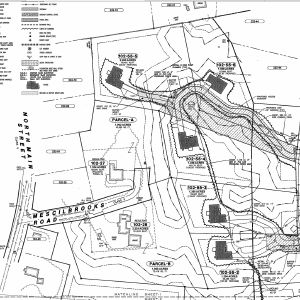Backyard Naturalist: Keep an eye out for tagged hawks
| Published: 09-29-2022 10:49 AM |
I arrived at The Dublin School’s Nordic Center trails on a muggy late June afternoon. I had neither skis (obviously) nor a mountain bike in tow; only binoculars, a spotting scope, and…a hard hat. It had already been a long day. I had been out since sunup scouring large tracts of conserved land around the Harris Center in search of nesting Broad-winged Hawks. On this day, thus far, my efforts were in vain, and time was working against me. I needed to find another nest before the trapping crew arrived the following week.
In 2021, the Harris Center partnered with Hawk Mountain, the world’s foremost raptor conservation organization, to initiate a multi-year project studying Broad-winged Hawks nesting in the Monadnock Region by trapping and outfitting them with transmitters. The goals of the study are to gain a better understanding of the migratory movements and wintering ecology of this ‘complete migrant’ – a species whose breeding population completely shifts to a different area during the winter months. Through previous studies, researchers have learned that Broad-winged Hawks migrate between their breeding grounds in Canada and the US, and overwintering sites in South America. Their migration is well-known and celebrated each fall at places like the Harris Center’s Pack Monadnock Raptor Observatory, one of several New England ‘hawk watches’ that monitors raptor migration. Hawk watches like Pack contribute valuable data that aid conservation biologists in determining population estimates. But transmitters are a game changer in how they allow close study of every movement of a particular bird without the need to see it again.
Broad-winged Hawks are by no means rare in New England’s heavily forested interior. They may be the most common breeding raptor species in many regions, and the Monadnock Region is no exception.
Their high-pitched call, given frequently in early spring when the birds arrive back to their breeding grounds, is familiar to many who live in wooded areas. Like many species, though, Broad-winged Hawks have evolved specialized behaviors and adaptations that allow them to fly ‘under the radar' when needed. Each spring, this crow-sized hawk builds a stick nest high in trees within dense forests. Both the nest and the bird itself blend in well with tree canopies whose heights regularly exceed 80 feet. Adult hawks, when tending to eggs and nestlings in May and June, can be very secretive and may call only rarely.
Part detective and part spy, I woke early and spent long mornings on Harris Center land and other wooded areas in surrounding towns for several weeks in search of the ultimate goal, the needle in the haystack – an active Broad-winged Hawk nest. Like the hawk, I traveled silently and blended into my surroundings in uniform – tan DEET-covered field pants and a camo shirt, binoculars slung around my neck, and a spotting scope over my shoulder. I navigated the woods following a series of clues, including bird sightings and calls, investigated hundreds of old nests or those of different species, and built a knowledge of place with each successive visit, constantly refining my search area. I encountered incredible wildlife like bears, saw beautiful places, and met curious landowners, all of whom were kind and generous when the topic of raptors came up, often sharing their own hawk stories with me.
Back at the Nordic Center, though, I donned a hard hat. Days earlier, a friend had gleaned (from a social media post, of all ways) that an aggressive raptor had been diving at hikers. Broad-winged Hawks, while not generally known for this behavior, can sometimes be aggressive while defending their nestlings. It was clear to me after seeing the post – complete with the image of a hawk with wings outstretched in the air over a person’s head – that this was indeed the case here. Now, I had returned for a third attempt as my previous nest-searching efforts resulted only in frustration. On this outing, no fewer than five times did one of the adult hawks whip past my head without warning. These attacks left me not only with a racing heart but also useful clues. Paired with other clues, such as an impromptu interview with a local walker who had been attacked, my suspected nest radius had narrowed to an area along a busy road. Finally, I glanced up at the right tree – a Red Oak with a messy stick nest and two downy Broad- winged Hawk nestlings.
Days later, I returned with the Pennsylvania-based Hawk Mountain trapping crew, who set up mist nests and a decoy owl as a lure. We quickly trapped the feisty female (which we named ‘Skatutakee’ in honor of the mountain the Harris Center stewards) and outfitted her with a cellular transmitter that will track her movements as long as she lives or the technology lasts. Skatutakee’s initial pre-migratory movements saw her fly north into Quebec, a behavior that has already raised eyebrows among the research team. Follow her – and the other four tagged Harris Center hawks – on their migration south via the “Meet the birds“ button at harriscenter.org/broad-winged-hawk-tracking.
Phil Brown is Bird Conservation Director at the Harris Center for Conservation Education in Hancock.

 BUSINESS QUARTERLY – New housing projects could provide relief
BUSINESS QUARTERLY – New housing projects could provide relief Yoko Ono to receive MacDowell Medal
Yoko Ono to receive MacDowell Medal Scott Bakula starring in Peterborough Players’ ‘Man of La Mancha’
Scott Bakula starring in Peterborough Players’ ‘Man of La Mancha’ Mountain Shadows School hosts Olympic Studies Night
Mountain Shadows School hosts Olympic Studies Night HOMETOWN HEROES – Rose Novotny is motivated by community
HOMETOWN HEROES – Rose Novotny is motivated by community BUSINESS QUARTERLY – Antrim Planning Board approves Battaglia subdivision
BUSINESS QUARTERLY – Antrim Planning Board approves Battaglia subdivision Bernie Watson of Bernie & Louise dies at 80
Bernie Watson of Bernie & Louise dies at 80 Cosy Sheridan speaks and performs for Monadnock Writers’ Group
Cosy Sheridan speaks and performs for Monadnock Writers’ Group ‘The Last Laugh’ coming to Town Hall Theatre in Wilton
‘The Last Laugh’ coming to Town Hall Theatre in Wilton Echoes of Floyd performs Saturday at Peterborough Town House
Echoes of Floyd performs Saturday at Peterborough Town House
